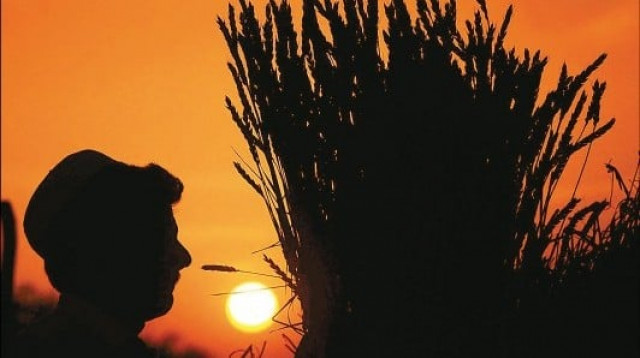
Agriculture is a mainstay of the Pakistan economy, although it has been declining as a percentage of gross domestic product (GDP) as the country’s industrial and service sectors have grown. Agriculture accounted for 21% of GDP in 2010, compared to 36% in 1980. On the flip side the sector provided livelihoods for 45% of the population in 2010, down from 53 percent three decades earlier, according to the Food and Agriculture Organization.
There is no argument that Pakistan’s food security rests upon its wheat production. The country produced 24 million tons of wheat in 2010, compared with 11.6 million tons a year in the early 1980s. Wheat has helped feed a population that has grown to 174 million people from 85 million in 1980. Rice production has more than doubled over the same period, rising to seven million tons from 3.3 million tons, and is now a major export crop earning $2.2 billion in foreign exchange.
Cotton has become a major industrial feedstock, with production increasing to 12 million bales in 2010, up from 4.5 million bales in the early 1980s. Livestock production has also substantially increased to a value of $758.604 million from $51.51 million in 1980. Livestock exports totalled $37.46 million in 2010, compared to $1.170 million three decades ago.
If we take into account the case of wheat, it is a major success story for Pakistan that has moved from being a net importer in 1980 to having a sustained presence on export markets during the last decade. Wheat accounts for two-thirds of national cereal production, and is the most important contributor to overall food security.
However much remains to be done. The yield gap is substantial between leading farmers getting six tons per hectare, and the average farmer getting 2.6 tons. Increased adoption of proven agronomic improvements can help reduce this gap. These improvements include provision of quality seed through the private and public sector, timely sowing and availability of inputs, adoption of a more balanced fertilisation, modification of irrigation regimes to more closely match actual crop water requirements and stage of development. Opportunities to increase productivity exist through system improvements such as increased development of conservation agriculture approaches, use of green manuring, development of rice-wheat cropping systems, reduction in soil tillage and use of selective herbicides for weed control offer opportunities to increase productivity.

Pakistan also faces some challenges like the breakdown in resistance to some key diseases which will require further investment in development of new crop varieties, as well as varieties adapted to abiotic stress associated with climate change events. Water availability is becoming a major issue in the major wheat growing regions and while engineering improvements can reduce transmission losses, much remains to be done on improving water use efficiency from the agronomic standpoint in the crop field.
There is no policy of crop rotation. Therefore, the fertility of the soil is decreasing. The average thickness of fertile layer of soil in Pakistan is more than six inches but the average yield is lower than other countries where the layer of fertile soil is only four inches.
Water wastage is very high. Flood irrigation is still in practice which wastes almost 50 to 60% of water. Drip irrigation is the answer.
Pakistan has low yield per acre that means the average crop in Pakistan is just 25% of that of advanced states. Even Saudi Arabia has a higher wheat yield than Pakistan.
Given the right economic incentives, agriculture will respond to market demand, as it has done in the past. Of course, many poor farmers in marginal environments will be in a position to respond only if they gain access to inputs, markets and technologies, and if the policy environment is favourable. These measures are essential if poor farmers and their families are not to find themselves trapped in poverty. The livelihood of the farmer and the sustainability of the agriculture sector are key to the livelihood and the sustainability of Pakistan.
Published in The Express Tribune, December 10th, 2012.

















COMMENTS
Comments are moderated and generally will be posted if they are on-topic and not abusive.
For more information, please see our Comments FAQ